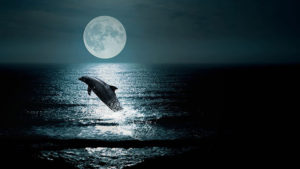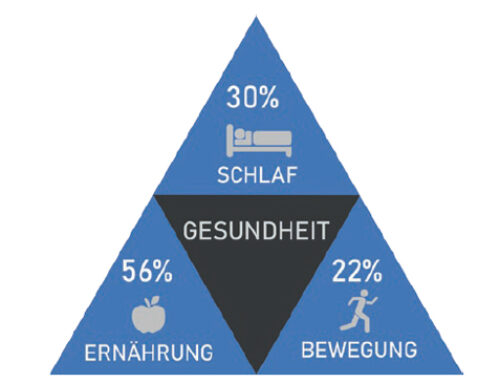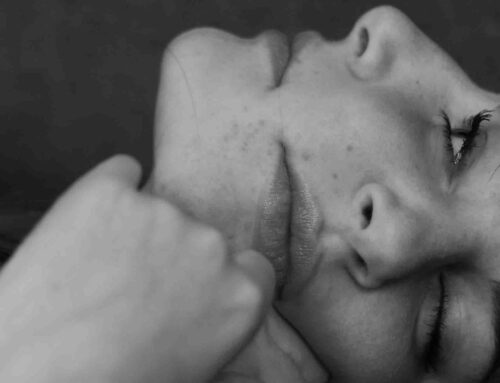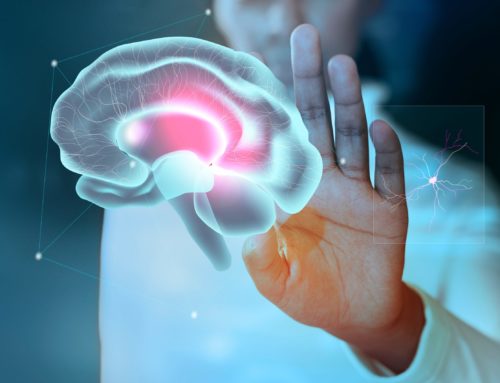

In memory of Lev Mukhametov (1938-2021)
Sleep in marine mammal species
A Russian biologist Lev Mukhametov (19.05.1938 – 18.06.2021) had worked most of his life at the Severtsov Institute of Ecology and Evolution of the Russian Academy of Sciences and had devoted a lot of his activities to investigating sleep in marine animals. In 1970s, L. Mukhametov leading a group of colleagues and collaborators discovered a phenomenon of unihemispheric slow wave sleep in dolphins. Unihemispheric slow-wave sleep appears alternatively in both hemispheres and is the dominant type of natural sleep in dolphins. In captivity, sleep is predominantly registered during night and second half of the day (Neurofiziologia, 1988). By recording EEG, EMG and eye movements, Lev Mukhametov could not demonstrate typical REM-sleep features in freely moving dolphins. L. Mukhametov et al. concluded that, due to constant moving, behavioral observations alone cannot distinguish between sleep and wakefulness in dolphins (Zh Vyssh Nerv Deiat Im I P Pavlova, 1975; Physiol Behav, 2002, Neurosci Lett, 1987). Further studies suggested that sleep deprivation in one dolphin hemisphere led to an increase in sleep pressure and following rebound of delta sleep in the deprived hemisphere only; at the same time sleep in another, non-deprived hemisphere appeared normal and did not seem to compensate sleep loss in the deprived one (J Sleep Res, 1992).
In further studies, L. Mukhametov et al. confirmed unihemispheric sleep in some other cetacean species. In particular, beluga (white) whales also show predominantly unihemispheric sleep which correlated mostly with the closure of the contralateral eye and opened state of the ipsilateral eye. Episodes of bilateral eye closure were very short and seldom and comprise less than 2% recorded time. The authors concluded that unihemispheric sleep allows Cetaceans to monitor the environment and detect predators or danger (Behav Brain Res, 2002). So one of the biological functions of unihemispheric sleep is the animal protection. Other functions include the opportunity to surface regularly for breathing and thermoregulation (Zh Vyssh Nerv Deiat Im I P Pavlova, 2013).
Some other marine mammals (e.g. fur seals) show both bilateral and unihemispheric slow wave sleep dependently of the surrounding (Experientia, 1985). Fur seals and other eared seals in natural environment spent their feeding season in the open sea, and a breeding season on land. In the lab they demonstrated “dolphin-like” sleep while in water, that is, unihemispheric slow-wave sleep and almost complete absence of REM sleep. While on land, eared seals demonstrate typical terrestrian mammalian sleep: symmetrical slow wave sleep and a lot of REM sleep (J Sleep Res, 2008; J Sleep Res, 2012).
These and other findings by L. Mukhametov and his colleagues of sleep characteristics in marine species contributed a lot to the further understanding of local sleep and development of somnology.
Main papers by Lev Mukhametov et al.
1. Kendall-Bar JM, Vyssotski AL, Mukhametov LM, Siegel JM, Lyamin OI. Eye state asymmetry during aquatic unihemispheric slow wave sleep in northern fur seals (Callorhinus ursinus). PLoS One. 2019, 22;14(5):e0217025. doi:10.1371/journal.pone.0217025
2. Liamin OI, Mukhametov LM. [Sleep in cetaceans]. Zh Vyssh Nerv Deiat Im I P Pavlova. 2013; 63 (1): 61-74. (In Russian). doi: 10.7868/s0044467713010097
3. Lyamin OI, Korneva SM, Obukhova ED, Mukhametov LM, Siegel JM. Evaluation of the ability of northern fur seals to perceive and visually discriminate images under the conditions of sleep loss. Dokl Biol Sci. 2015; 463: 211-214. doi:10.1134/S0012496615040080
4. Lyamin OI, Kosenko PO, Korneva SM, Vyssotski AL, Mukhametov LM, Siegel JM. Fur seals suppress REM sleep for very long periods without subsequent rebound. Curr Biol. 2018, 28: 1-6. doi: 10.1016/j.cub.2018.05.022
5. Lyamin OI, Kosenko PO, Lapierre JL, Mukhametov LM, Siegel JM. Fur seals display a strong drive for bilateral slow-wave sleep while on land. J Neurosci. 2008, 26; 8(48): 12614-12621. doi: 10.1523/JNEUROSCI.2306-08.2008
6. Lyamin OI, Kosenko PO, Vyssotski AL, Lapierre JL, Siegel JM, Mukhametov LM. Study of sleep in a walrus. Dokl Biol Sci. 2012;444:188-191. doi:10.1134/S0012496612030143
7. Lyamin OI, Lapierre JL, Kosenko PO, Kodama T, Bhagwandin A, Korneva SM, Peever JH, Mukhametov LM, Siegel JM. Monoamine release during unihemispheric sleep and unihemispheric waking in the fur seal. Sleep. 2016;39(3):625-636. doi: 10.5665/sleep.5540
8. Lyamin OI, Lapierre JL, Kosenko PO, Mukhametov LM, Siegel JM. Electroencephalogram asymmetry and spectral power during sleep in the northern fur seal. J Sleep Res. 2008;17(2):154-165. doi: 10.1111/j.1365-2869.2008.00639.x
9. Lyamin OI, Manger PR, Mukhametov LM, Siegel JM, Shpak OV. Rest and activity states in a gray whale. J Sleep Rs. 2000; 9(3): 261-7. doi: 10.1046/j.1365-2869.2000.00212.x
10. Lyamin OI, Manger PR, Ridgway SH, Mukhametov LM, Siegel JM. Cetacean sleep: an unusual form of mammalian sleep. Neurosci Biobehav Rev. 2008; 32(8): 1451-1484. doi: 10.1016/j.neubiorev.2008.05.023
11. Lyamin OI, Mukhametov LM, Chetyrbok IS, Vassiliev AV. Sleep and wakefulness in the southern sea lion. Behav Brain Res. 2002, 22; 128(2): 129-138. doi: 10.1016/s0166-4328(01)00317-5
12. Lyamin OI, Mukhametov LM, Siegel JM, Nazarenko EA, Polyakova IG, Shpak OV. Unihemispheric slow wave sleep and the state of the eyes in a white whale. Behav Brain Res. 2002; 29(1-2): 125-129. doi: 10.1016/s0166-4328(01)00346-1
13. Lyamin OI, Mukhametov LM, Siegel JM. Relationship between sleep and eye state in Cetaceans and Pinnipeds. Arch Ital Biol. 2004; 142(4): 557-568.
14. Lyamin OI, Mukhametov LM, Siegel JM. Sleep in the northern fur seal. Curr Opin Neurobiol., 2017; 44: 144-151. doi: 10.1016/j.conb.2017.04.009
15. Lyamin OI, Pavlova IF, Kosenko PO, Mukhametov LM, Siegel JM. Regional differences in cortical electroencephalogram (EEG) slow wave activity and inter hemispheric EEG asymmetry in the fur seal. J Sleep Res. 2012; 21(6): 603-611. doi: 10.1111/j.1365-2869.2012.01023.x
16. Lyamin OI, Shpak OV, Nazarenko EA, Mukhametov LM. Muscle jerks during behavioral sleep in a beluga whale (Delphinapterus leucas L.). Physiol Behav. 2002, 76(2): 265-270. doi: 10.1016/s0031-9384(02)00722-9
17. Mukhametov LM, Oleksenko AI, Poliakova IG. Kolichestvennaia kharakteristika élektrokortikograficheskikh stadiĭ sna u del’finov-afalin [Quantitative characteristics of the electrocorticographic sleep stages in bottle-nosed dolphins]. Neirofiziologiia. 1988; 20(4): 532-538. (In Russian).
18. Mukhametov LM, Supin AIa, Poliakova IG. Son kaspiiskikh tiuleneĭ [Sleep of Caspian seals]. Zh Vyssh Nerv Deiat Im I P Pavlova. 1984; 34(2): 259-264. (In Russian).
19. Mukhametov LM, Supin AIa. EEG-issledovanie razlichnykh povedencheskikh sostoianiĭ svobodnopodvizhnykh del’finov [An EEG study of different behavioral states of freely moving dolphins]. Zh Vyssh Nerv Deiat Im I P Pavlova. 1975; 25(2): 396-401. (In Russian).
20. Mukhametov LM, Supin AY, Polyakova IG. Interhemispheric asymmetry of the electroencephalographic sleep patterns in dolphins. Brain Res. 1977; 134(3): 581-584. doi: 10.1016/0006-8993(77)90835-6
21. Mukhametov LM. Unihemispheric slow-wave sleep in the Amazonian dolphin, Inia geoffrensis. Neurosci Lett. 1987; 79(1-2):128-132. doi: 10.1016/0304-3940(87)90684-7
22. Oleksenko AI, Mukhametov LM, Polyakova IG, Supin AY, Kovalzon VM. Unihemispheric sleep deprivation in bottlenose dolphins. J Sleep Res. 1992; 1(1):40-44. doi: 10.1111/j.1365-2869.1992.tb00007.x
23. Pryaslova JP, Lyamin OI, Siegel JM, Mukhametov LM. Behavioral sleep in the walrus. Behav Brain Res. 2009; 201(1): 80-87. doi:10.1016/j.bbr.2009.01.033
Material prepared by L. Korostovtseva and V. Kovalzon.





